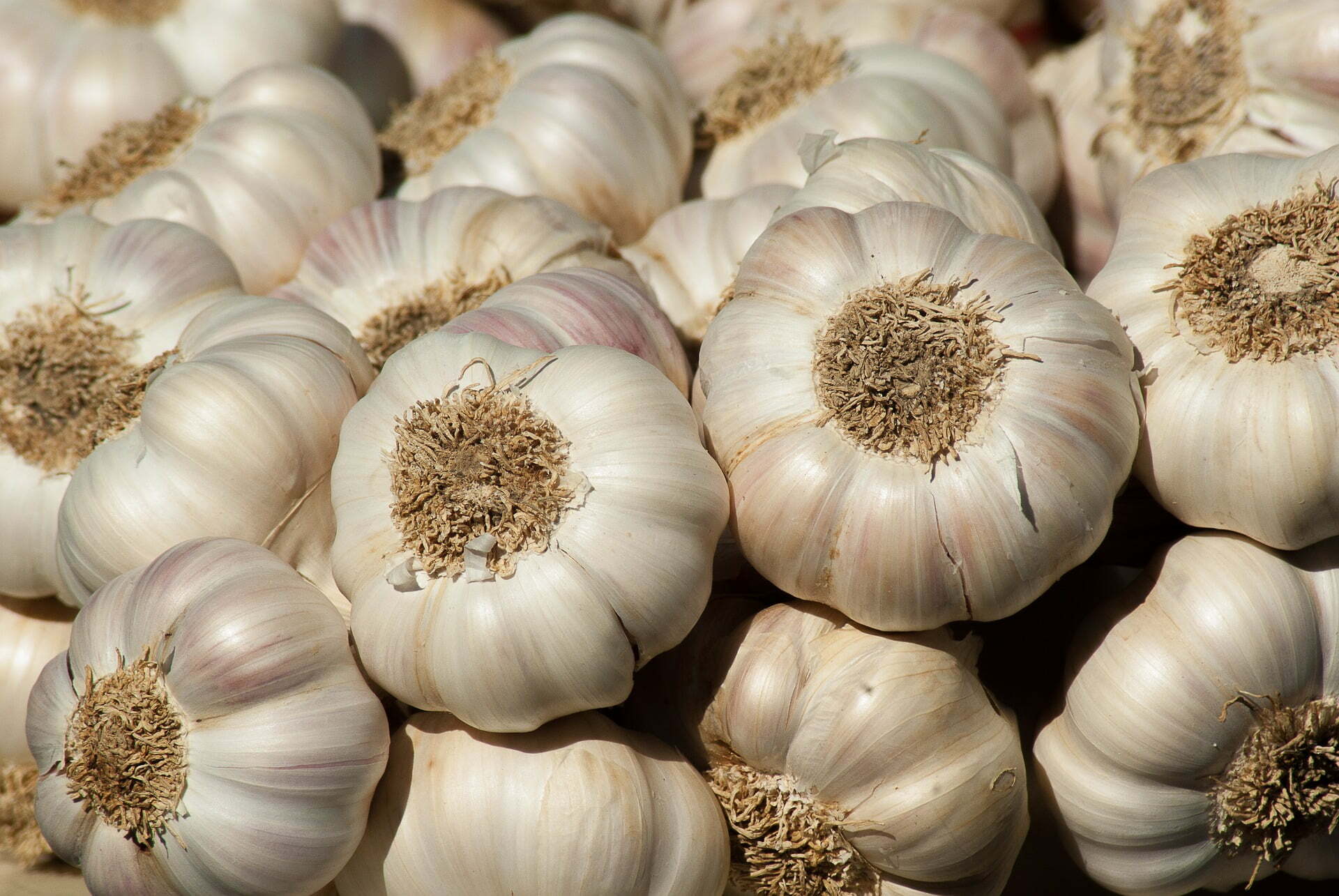Garlic (Allium sativum), often referred to as the “stinking rose,” is a kitchen staple with a storied history. Loved for its pungent aroma and robust flavour, garlic has been used in cuisines and traditional medicine for thousands of years. Let’s explore its origins, uses, and why it remains an essential ingredient in cooking and wellness.
Origins and Characteristics
Garlic is native to Central Asia and has been cultivated for over 5,000 years. A member of the allium family, alongside onions, leeks, and shallots, garlic grows as a bulb consisting of multiple cloves encased in a papery white or purple skin. Its distinctive smell and taste come from sulfur compounds, particularly allicin, which is released when garlic is chopped, crushed, or chewed.
Culinary Uses
Garlic’s versatility makes it indispensable in kitchens worldwide:
- Savory Dishes: Garlic enhances soups, stews, sauces, and marinades.
- Roasted Garlic: Slow roasting mellows its pungency and adds a creamy, caramelised flavour perfect for spreads and dressings.
- Seasoning: It’s a core ingredient in spice mixes like adobo, harissa, and garam masala.
- Flavoured Oils: Garlic-infused oils are a simple way to add depth to salads and pasta.
From Italian garlic bread to Indian garlic naan, its culinary applications are nearly limitless.
Health Benefits
Garlic is celebrated not just for its taste but also for its health-promoting properties:
- Heart Health: Studies suggest garlic can help reduce blood pressure, lower cholesterol levels, and improve circulation.
- Immune Boost: Garlic’s antimicrobial and antiviral properties support the immune system and help fight infections.
- Antioxidant Properties: Rich in antioxidants, garlic helps combat oxidative stress and may protect against chronic diseases.
- Anti-inflammatory Effects: Its sulfur compounds reduce inflammation, benefiting conditions like arthritis.
- Blood Sugar Control: Garlic may help regulate blood sugar levels, making it beneficial for people with diabetes.
How to Incorporate Garlic into Your Diet
Here are some simple ways to enjoy garlic:
- Raw: Mince and add to salad dressings, dips, or salsas for a bold flavour.
- Cooked: Sauté it with vegetables, meats, or grains for a savoury base.
- Fermented: Try black garlic, which offers a sweet, umami-packed alternative to raw garlic.
- Pickled: Pickled garlic cloves are tangy and crunchy, perfect as a condiment.
Garlic in Traditional Medicine
For centuries, garlic has been a staple in Ayurvedic, Chinese, and European remedies. It’s been used to treat everything from colds and flu to digestive issues and parasitic infections. Modern science continues to validate many of these traditional uses.
Precautions
While garlic is safe for most people, consuming large amounts may cause digestive discomfort or bad breath. Those on blood-thinning medication should consult a doctor, as garlic may increase the risk of bleeding.
The Verdict
Garlic’s ability to transform dishes and promote health makes it a true culinary and medicinal hero. Its bold flavour and proven benefits have secured its place in kitchens and natural medicine cabinets worldwide.
Do you have a favourite garlic recipe or remedy? Share your tips and experiences below!

